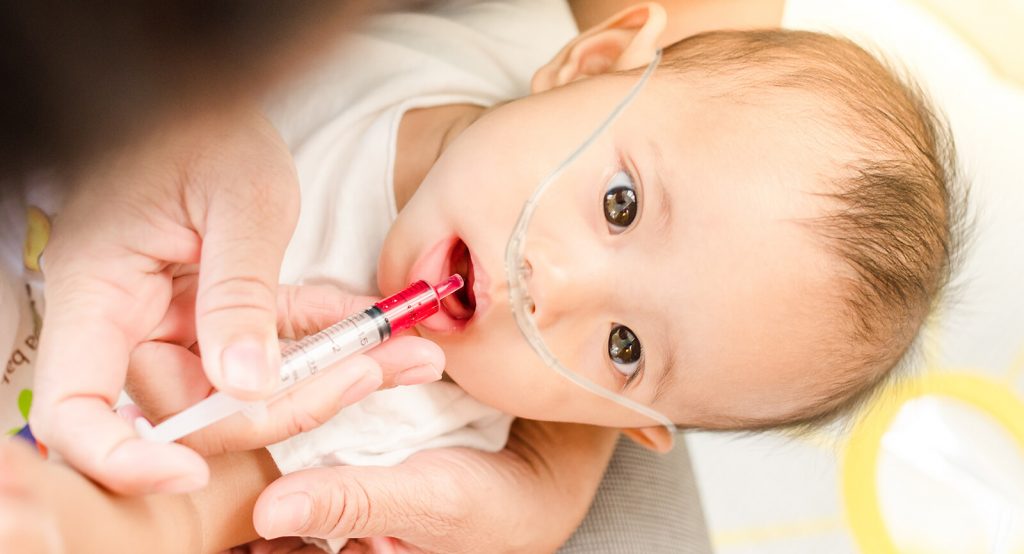Study Suggests Orally Feeding Children with Bronchiolitis on High Flow Nasal Cannula Is Well Tolerated

In May 2017, Sochet and colleagues published the results of a prospective, single-center, observational cohort study in the journal Hospital Pediatrics titled “Oral Nutrition in Children With Bronchiolitis on High-Flow Nasal Cannula Is Well Tolerated.” The study looked at 132 children (1 month – 2 years) who had been diagnosed with bronchiolitis, but not any other comorbidities and who were put on High Flow Nasal Cannula (HFNC) with flow ranges between 4-13 LPM, with the weight adjusted flow range being 0.3-1.9 L/kg/min.1 128 of the patients (97%) received oral feeding while 4 (3%) were fed with a nasogastric tube. The primary outcomes were that one child (0.8%) experienced aspiration-related respiratory failure while 12 (9.1%) had nutrition interruptions.
The one patient who experienced aspiration-related respiratory failure was a three-month old on a nasogastric tube with a respiratory rate of 22 and a HFNC rate of 5 LPM (weight adjusted to 0.6 L/kg/min). The aspiration happened within 30 minutes of starting continuous nasogastric nutrition. Of the remaining 11 patients who experienced nutrition interruptions, 10 were due to tachypnea, while one was due to increased work of breathing. The median flow rate at the time of nutrition interruption was 6 LPM and the same as it was at the time of initiation of nutrition.
Watch Brett Manley, Bradley Yoder, and Amir Kugelman discuss feeding babies on high flow »
There was no recorded clinical difference in characteristics between the cohort that experienced nutrition interruptions and the patients who didn’t. The patients who did experience feeding interruptions took longer to meet all nutritional goals (0.9 days, P = 0.3). The researchers note that “65% of children in our sample were receiving equal or higher HFNC flow rates and 25.8% had equal or greater respiratory rates at the time of enteral nutrition initiation compared with values on admission and HFNC initiation. This finding suggests that the use of HFNC flow and patient respiratory rates alone to determine nutrition safety is insufficient and requires further evaluation.”
The authors address two previous studies that link HFNC with aspiration during feeding and note that they suspected the presence of GERD to have been a confounding variable in those studies. As for this Sochet and colleagues’ study, children with GERD, or any other comorbidities, were excluded. The exclusion criteria also encompassed children born prematurely (gestational age < 37 weeks). The authors note that these exclusion criteria might have contributed to their sample having a much lower incidence of the need for mechanical ventilation (0.8%) by comparison to previously reported rates (7-17%).
Nevertheless, this study is the largest of its kind to date and its results suggest that withholding nutrition from bronchiolitis patients on HFNC may not be a warranted practice. The authors called for a prospective, randomized trial to definitively answer that question.
For hospitals using Vapotherm high velocity therapy, it’s worth noting that these findings on HFNC could be extrapolated. Although Vapotherm high velocity therapy is a mask-free form of noninvasive ventilation, its primary mechanism of action is flush-based.
References